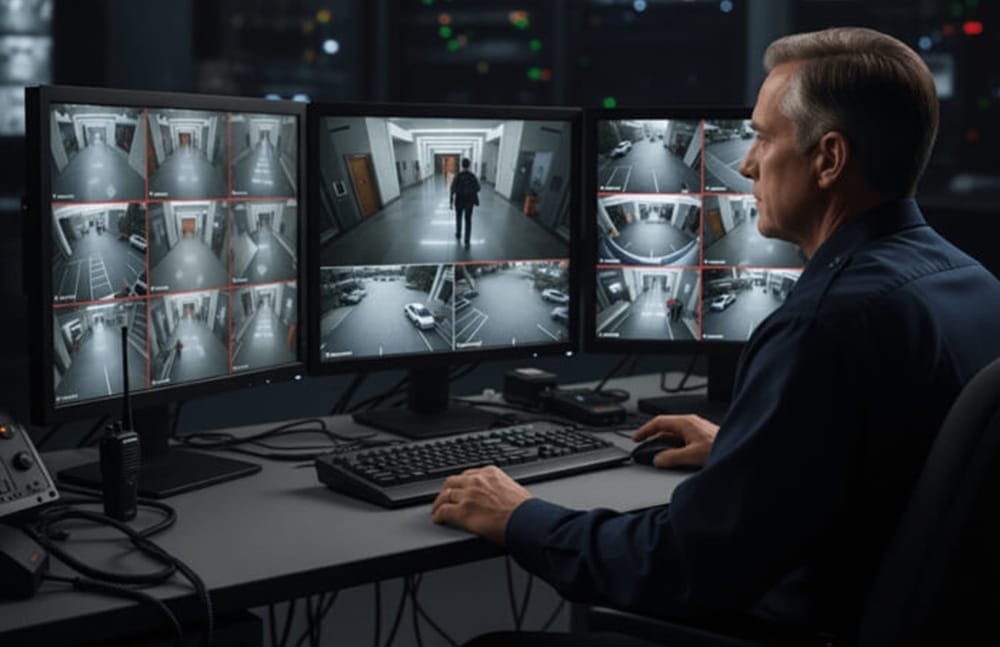Eagle Eye Networks’ has released a recent blog outlining remote surveillance, or remote video monitoring (RVM). It explains what it is, what’s involved, the costs associated with it, as well how it is paid for, while also exploring the benefits and what you should look for in an RVM provider. This is an abridged version, and you can find a link to the full blog, below.
You’ve probably seen movies where government agencies, shadowy masterminds, or company security teams have instant access to surveillance cameras from around the world and can zoom in on any subject of interest by selecting from a bank of high-resolution monitors. Some of those remote-view scenarios come down to movie magic — but not all of them.
Behemoth companies, government agencies and militaries, and other large-scale users really have been able to view video remotely for a long time, but doing so was an expensive and involved project. Remote video transmission of analogue signals is what let people around the world watch NASA’s lunar landing more than 50 years ago, after all.
Since then, and especially in the last decade, the cost and availability of distant surveillance viewing have changed rapidly and radically. In fact, for anyone considering a new or upgraded video surveillance system today, remote video viewing of some kind is a standard expectation. Even consumer-level security cameras typically allow viewing via cloud-based access — and in fact may allow nothing else.
What is remote video monitoring?
It’s helpful to distinguish between the ability to simply view a video at a distance and actual remote video monitoring.
Any time camera output is being watched or monitored by professionals at a substantial distance from the camera itself, it’s an instance of remote video monitoring. You could consider a video monitoring station located in the basement of a large office building or across an industrial complex from a production area to be a remote video monitoring system. Usually, though, the term is thought of as applying to observation from even greater distances, whether that means across town or across the country.
Making that possible in decades past usually involved dedicated physical networking links. It meant transmitting still frames at intervals via slow-scan video, or delivering analogue camera output over a dedicated coaxial cable – obviously an expensive proposition. (In the same way, alarm systems often required a dedicated phone connection.)
What are the benefits of remote video monitoring?
Here are five ways that remote video monitoring leverages cloud-centred video sharing capabilities for practical benefit to organisations of all kinds.
Reduced need for in-person guard staff. This saves on headcount costs and allows guards to be deployed more efficiently and safely. Far better to have a camera view of a dangerous situation than require on-site personnel to approach that situation up close.
Fast reactions. Monitoring professionals can evaluate events for instant action outside of normal business hours, when a manager might be sleeping, slowing the kind of reaction that would be possible during normal operations.
In-person safety: In the event of a dangerous situation, remote video monitoring allows people to be evacuated to safety without compromising situational awareness. For example, if AI detects a gun, trained staffers can immediately escalate the situation.
Scalability across sites: Remote monitoring for a new location or building can be readily spun up simply by adding remote video streams for monitoring.
Human eyes on distant sites: For large-scale industrial locations, remote monitoring makes it easy to keep an eye on complex installations.
Considering the benefits of remote video monitoring? Read the full blog, and get in touch with Eagle Eye Networks, here.
For more Eagle Eye Networks news, click here




